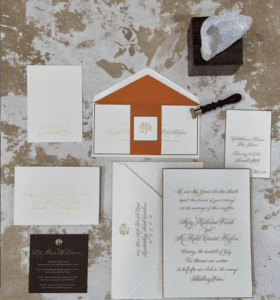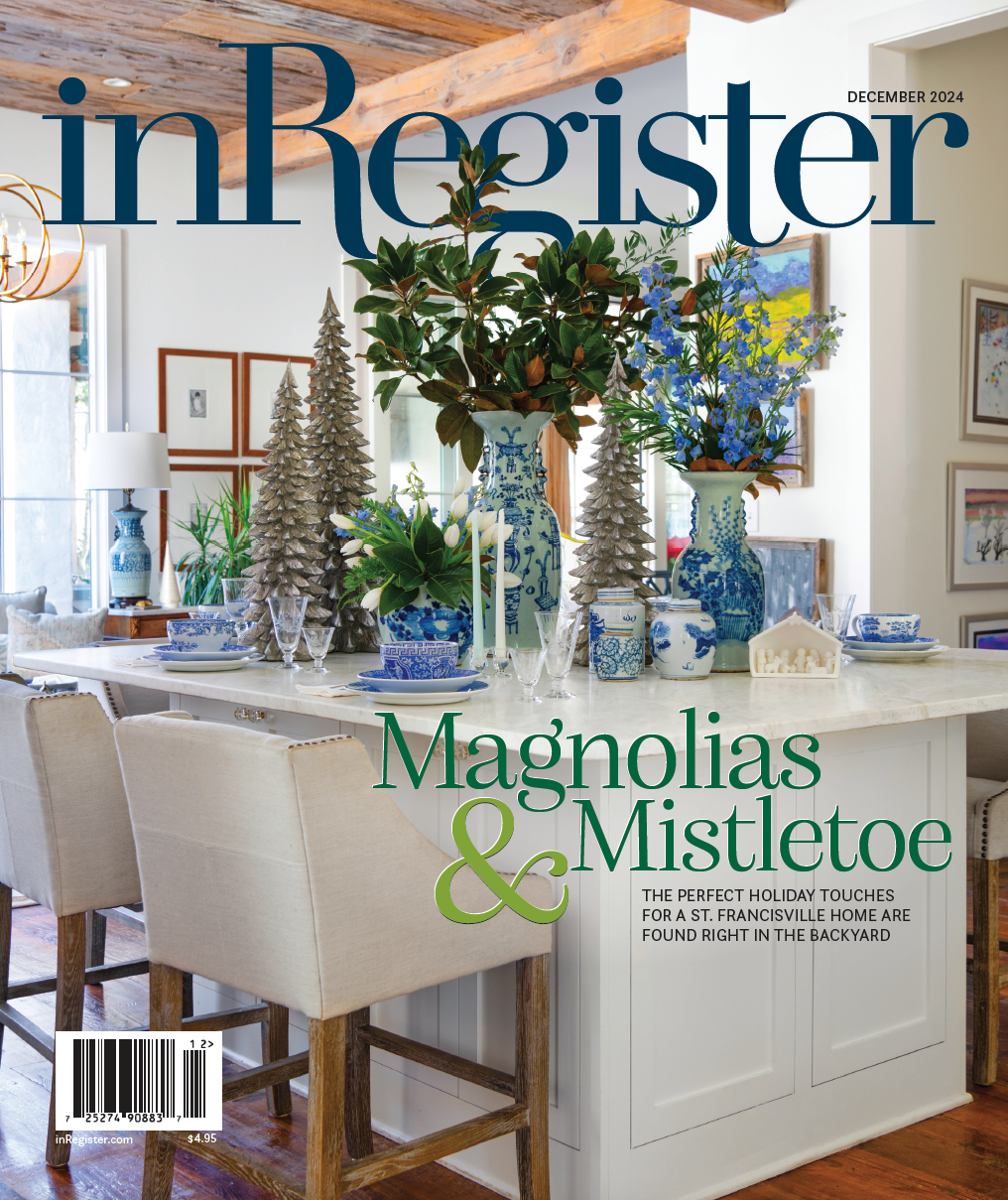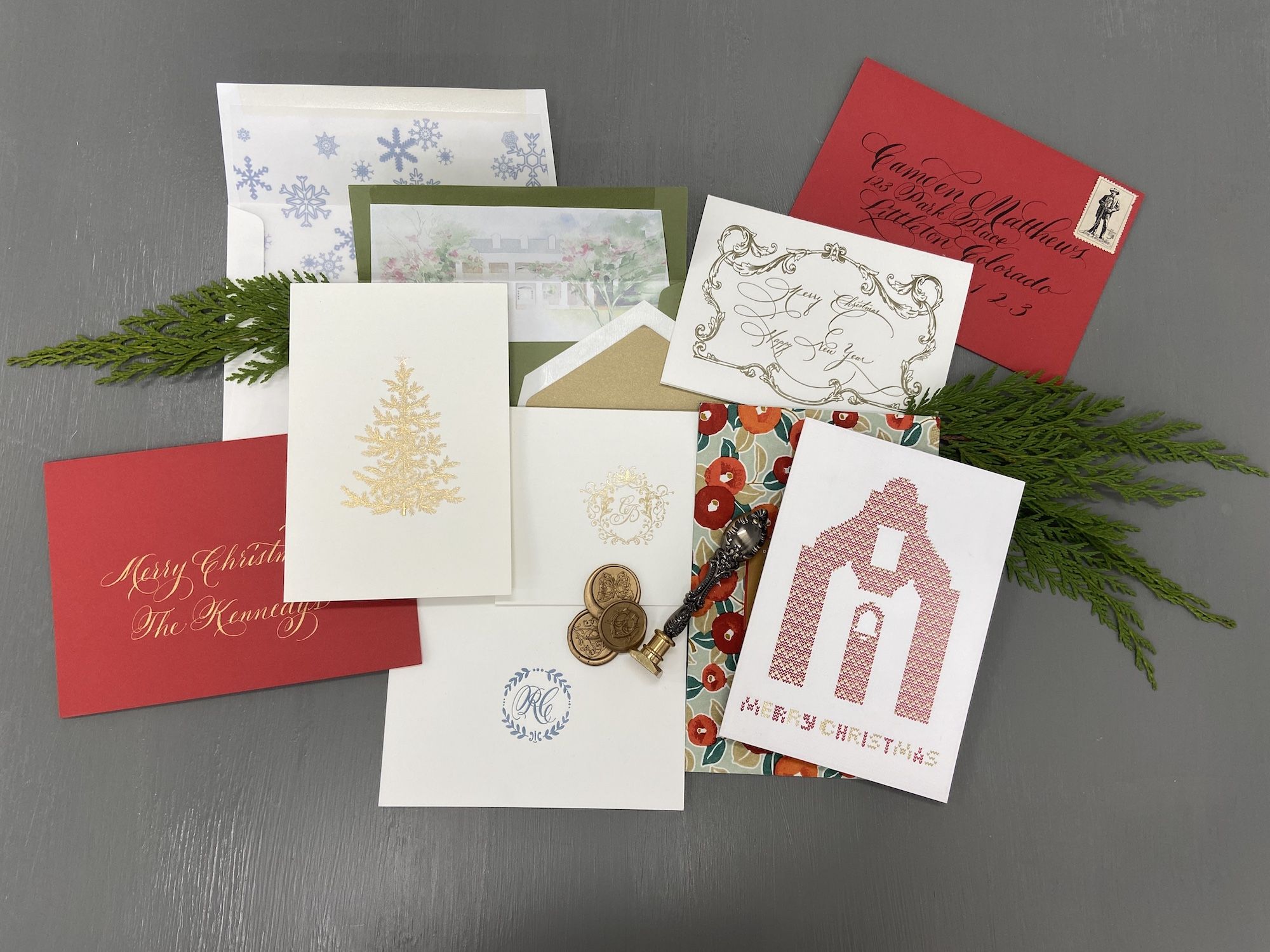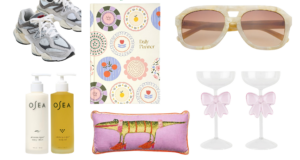Hands-on details for holiday cards with Paperwhite Stationery Boutique
Unless you’ve found yourself the ingratiated recipient of a private jet within the last several months, or discovered the willpower to road trip to closer-to-home locales, or masked up for a plane ride to an outdoor adventure, chances are your family hasn’t memorialized any traditional vacations this year. Maybe you’ve taken less photographs in general, with not many in-person events to commemorate. And maybe your plans for an annual family Christmas card look a bit less current as a result.
Then again, maybe 2020 is the perfect time for an aesthetic revamp of the same-old-same-old. Stationery storefronts exist for a reason, and according to Paperwhite Stationery Boutique owner Kathryn Podorsky, our prolonged hibernation has made tired our reliance on digital invites and photo books, and has instead reintroduced a preference for physical, handwritten paper goods that remind us of the connections we’ve lost. With care for clients and for creative freedom, Podorsky and co-owner Alisa Kennedy have crafted plenty of cards whose personal touches might even surpass the postcard-style photographs we’re so used to sharing with friends and family.

“We actually have a letterpress machine right here in the store,” says Podorsky. “Our clients want to be involved in the design process, so they’ll often come and watch their piece be letter pressed live, taking videos or making sure the colors come out the way they want. People really gravitate to that.”
As with any object made to be held and cherished, texture (and occasionally function) is equally as important as style.
“People tend to go for beautiful, thick, handmade paper or super thick cotton stock,” she says. “Actually, we’re currently working on a project with plantable stock, which means that it has seeds in it that will grow.”
Also on the rise: personal design elements like a family crest, logo or cypher.
“Things like that really add something personal and show the more creative side of a person,” says Podorsky. “People have been using that as a brand, incorporating it into everything they print, from wedding invitations to personal stationery to envelopes and cards. It’s like a family logo, basically.”
Likewise, the entire package—including envelope details like colors, calligraphy, lining and wax seals—has become almost as important as the message inside a mailed card or letter.

“People have been using art on their cards and stationery these days,” says Podorsky. “It could be a watercolor design or a photograph that’s been reproduced in pen and ink. It’s something that’s meaningful to the client, and helps bring in their own style and taste and gives a card a special touch.”
Podorsky has also worked as a professional calligrapher for more than 20 years, and has spearheaded the store’s past calligraphy classes for people looking to be even more involved with what they send out to the world. She’s even designed her own handwritten font, “Vena Amoris”—the Latin phrase “vein of love” commonly used to name the ring finger—which clients can purchase and use as an alternative to their own handwriting. Sometimes, though, there’s nothing better than the real deal.
“We had a client whose father passed away of old age, and she had adored his handwriting growing up,” says Kennedy. “So she found an old Christmas card that he had written years ago, and we scanned it, cleaned it up, and turned the handwriting into a letterpress plate. Now she’s used it for her own Christmas cards for the past two years!”
As it turns out, the Internet age isn’t all the rage in a time of isolation. This year especially, maybe the best way to spend time with faraway family is to spend a little extra time on the small things: signed, sealed, delivered.












